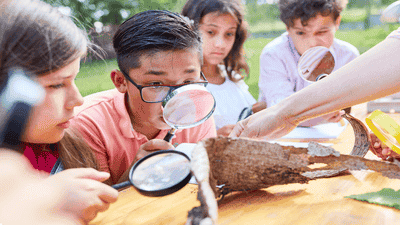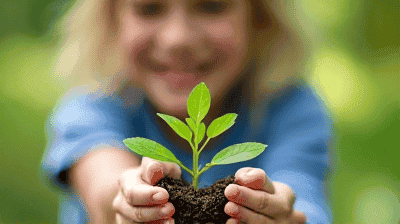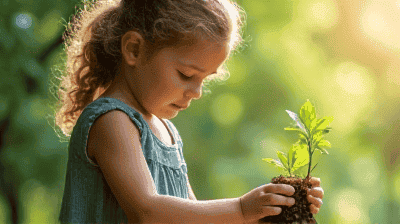
As we face the growing challenges of environmental degradation and climate change, fostering a sense of sustainability in the younger generation has never been more important. One effective way to instill these values is through hands-on nature activities that engage children and connect them with the natural world. Active participation not only enhances their understanding of sustainable practices but also nurtures a lifelong love for the environment.
Sustainability refers to meeting our present needs without compromising the ability of future generations to meet their own needs. It encompasses the responsible use of resources, environmental stewardship, and social equity. Teaching children about sustainability means helping them understand how their actions impact the planet and encouraging them to adopt practices that promote ecological balance.
Awareness of Environmental Issues: Children today are growing up amidst discussions about climate change, pollution, and biodiversity loss. Teaching them about sustainability equips them with knowledge about these pressing issues.
Empowerment: Understanding sustainability empowers children to make informed choices and take action in their daily lives, fostering a sense of responsibility towards the planet.
Connection to Nature: Engaging in nature activities helps children develop a deeper appreciation for the environment, which is essential for fostering a sense of stewardship.
Skill Development: Hands-on activities promote critical thinking, problem-solving, and collaboration, which are vital skills for addressing complex sustainability challenges.

Objective: Encourage observation and understanding of biodiversity.
How to Do It:
Benefits: This activity fosters curiosity, promotes observation skills, and provides an opportunity to discuss the intricacies of ecosystems and biodiversity.
Objective: Teach about plant growth, local food production, and the importance of pollinators.
How to Do It:
Benefits: Gardening instills patience and responsibility while providing hands-on experience with food systems and the lifecycle of plants. It also highlights the importance of biodiversity and habitat protection.
Objective: Highlight the importance of water conservation and the water cycle.
How to Do It:
Benefits: These activities encourage thoughtful resource use and highlight the importance of water conservation in sustainable living.
Objective: Raise awareness about waste, pollution, and recycling.
How to Do It:
Benefits: Participating in clean-up activities instills a sense of responsibility and pride in the community. Learning about recycling fosters critical thinking about waste management.
Objective: Encourage reflection and observation of nature.
How to Do It:
Benefits: Keeping a nature journal cultivates observational skills and provides a creative outlet for children to express their thoughts about sustainability.
Objective: Emphasize the importance of local food systems and sustainable eating.
How to Do It:
Benefits: This activity not only teaches practical skills but also encourages children to make mindful food choices and understand the impact of their diet on the environment.
Objective: Teach children about the needs of local wildlife and habitat conservation.
How to Do It:
Benefits: This hands-on experience highlights the interdependence between humans and wildlife, raising awareness of habitat loss and the importance of conservation initiatives.
Connect activities to real-world environmental challenges that children can relate to. For example, discuss local pollution issues, the impact of climate change on their community, or conservation efforts that are underway in their region.
Encourage children to ask questions and explore their ideas rather than just providing answers. Inquiry-based learning promotes curiosity and deeper understanding, allowing children to engage actively with the subject matter.
Promote teamwork during activities so that children can learn from one another and develop social skills. Collaborative projects also help them understand the importance of collective action in sustainability efforts.
Incorporate digital tools like apps for bird or plant identification, nature photography, or documenting composting processes. Technology can enhance outdoor experiences and engage tech-savvy children without detracting from nature immersion.
After each activity, hold a discussion where children can share their experiences, thoughts, and feelings about what they have learned. Reflection reinforces understanding and helps integrate lessons about sustainability into daily life.
Recognize and celebrate children's efforts and achievements, no matter how small. This could be through certificates, showcases of their projects, or community recognition. Celebrating achievements fosters a sense of pride and motivation to continue sustainable practices.

Parents play an essential role in reinforcing lessons learned through hands-on activities. Encourage families to continue sustainability discussions at home, whether through gardening together, participating in local clean-up events, or implementing recycling practices.
Educators should seek ongoing professional development opportunities related to sustainability education. Workshops, courses, and online resources can equip teachers with the knowledge and skills necessary to engage students effectively.
Schools and organizations can partner with local environmental groups, nature centers, or parks to provide additional resources, expertise, and support for sustainability initiatives.
Hands-on activities stimulate multiple senses, making learning more enjoyable and effective. Children are more likely to retain information when they actively participate in learning experiences.
Outdoor activities promote physical movement and reduce screen time, contributing to overall health and well-being. Engaging with nature has also been shown to reduce stress and promote mental health.
Children who engage in hands-on nature activities are more likely to develop a sense of responsibility and stewardship toward the environment, becoming advocates for sustainability as they grow.

Teaching kids about sustainability through hands-on nature activities is an effective strategy for instilling a sense of environmental responsibility and appreciation for the natural world. By providing engaging, interactive experiences, we empower the younger generation to make informed choices that contribute to a more sustainable future.
As parents, educators, and community members, it is our responsibility to nurture these values in children and equip them with the knowledge and skills they need to address the pressing environmental challenges facing our planet. Let us come together to inspire the next generation to cherish and protect the Earth.